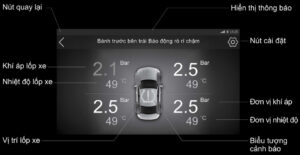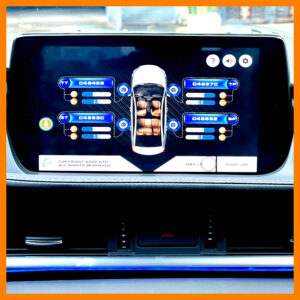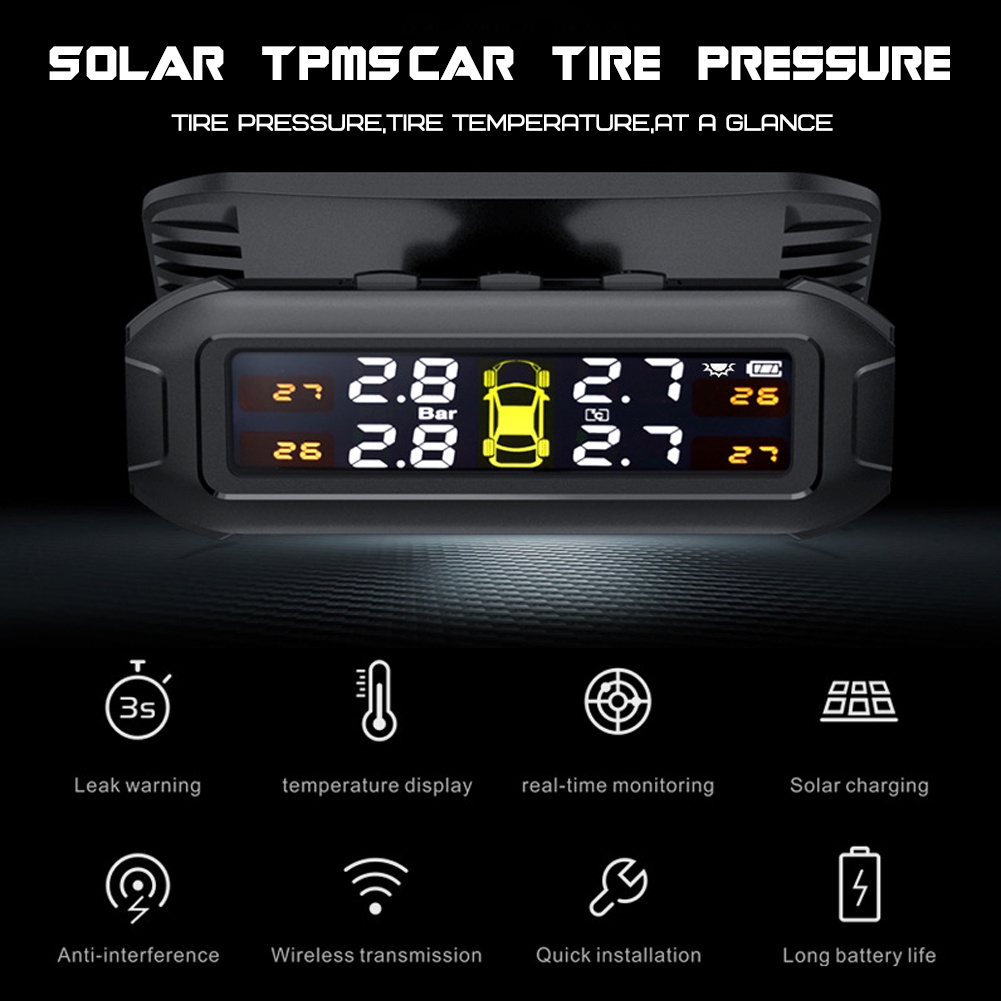Blog
How Accurate is Your TPMS? Understanding Sensor Precision
How Accurate is Your TPMS? Understanding Sensor Precision
The Tire Pressure Monitoring System (TPMS) is a vital safety feature in modern vehicles, designed to alert drivers when tire pressure falls below the optimal level, preventing tire blowouts and enhancing fuel efficiency. However, the accuracy of these systems often raises questions among car owners. How precise are TPMS sensors, and how reliable are the readings they provide? In this article, we’ll explore the accuracy of TPMS sensors, the factors that influence their precision, and what you can do to ensure the most accurate tire pressure readings for your vehicle.
What is TPMS and How Does It Work?
TPMS monitors the air pressure inside a vehicle’s tires and alerts the driver if any tire’s pressure drops significantly below the manufacturer’s recommended level. There are two main types of TPMS:
- Direct TPMS (dTPMS): This type uses sensors inside each tire to measure the air pressure directly. The data from these sensors is transmitted wirelessly to the vehicle’s onboard computer, which then displays it on the dashboard or infotainment system.
- Indirect TPMS (iTPMS): Instead of using dedicated sensors, indirect TPMS relies on the vehicle’s ABS (Anti-lock Braking System) sensors to measure the rotation speed of the tires. If one tire is underinflated, it will rotate at a different speed compared to the others, and the system will alert the driver.
Direct TPMS systems are generally more accurate than indirect ones because they measure tire pressure directly, while indirect systems are more of an estimation, based on tire rotation differences.
How Accurate Are TPMS Sensors?
1. TPMS Sensor Accuracy Standards
For direct TPMS sensors, the accuracy of tire pressure readings is typically within a +/- 1 to 2 psi range, which is generally considered sufficient for most driving conditions. This margin of error is due to various factors, such as temperature fluctuations, sensor tolerances, and the quality of the sensors themselves.
For example:
- Tire Pressure Display: If your TPMS shows a tire pressure reading of 30 psi, the actual tire pressure could be anywhere between 28 to 32 psi, depending on sensor variation.
- Manufacturer Specifications: Most tire manufacturers recommend keeping tire pressure within a specific range, such as 30 to 35 psi, but they may also account for a small variation due to sensor tolerance.
For indirect TPMS, the accuracy can be less reliable since it’s based on tire rotation speeds, and this estimation can be affected by factors like tire wear, load distribution, and road conditions. Therefore, direct TPMS is the more accurate system when it comes to tire pressure readings.
2. Factors That Affect TPMS Accuracy
Several factors can impact the accuracy of TPMS sensors, whether they are part of a direct or indirect system. Understanding these factors can help you interpret the readings more accurately and know when to take action.
a. Temperature Changes
Tire pressure fluctuates with temperature. For every 10°F change in ambient temperature, tire pressure changes by approximately 1 psi. This means that in colder weather, tire pressure may read lower, while in warmer weather, it may read higher. This temperature sensitivity can affect TPMS readings, leading to minor discrepancies in the data.
- Winter Months: During colder months, tire pressure may drop, which could trigger a low-pressure warning even if the tires were properly inflated during warmer conditions.
- Summer Heat: Conversely, in hot weather, tire pressure may increase, potentially causing the system to show higher-than-normal readings, even if the tire pressure was correct.
b. Tire Condition and Wear
Tires that are worn unevenly or have been damaged (e.g., punctures or cuts) may not be detected immediately by a TPMS, leading to inaccurate readings. TPMS sensors rely on specific pressure levels, and if the tire is degrading, the system may not immediately pick up changes that would indicate a need for tire replacement or repair.
c. Sensor Calibration
Over time, TPMS sensors may lose their calibration or become misaligned. Calibration ensures that the sensor is correctly reporting pressure levels based on the manufacturer’s specifications. If your TPMS sensors haven’t been calibrated recently or if you’ve had tire replacements, your system may be reporting inaccurate data. Some TPMS systems offer a reset or recalibration feature, but this process may require professional assistance.
d. Battery Life of Sensors
Direct TPMS sensors are powered by batteries that typically last for 5-10 years. When these batteries begin to lose charge, the sensors may start transmitting inaccurate data or stop working altogether. Inaccurate readings from failing sensors could lead to false alerts or a lack of alerts when there is a problem with the tire pressure.
e. Aftermarket TPMS Sensors
While many vehicles come with OEM (original equipment manufacturer) TPMS sensors, some owners opt to install aftermarket sensors, especially when replacing or upgrading tires. Aftermarket sensors may vary in quality, and compatibility with your vehicle’s system could impact the accuracy of the readings. Ensuring you choose high-quality, compatible sensors will help reduce discrepancies.

How to Ensure Accurate TPMS Readings
To get the most accurate readings from your TPMS system, it’s essential to maintain your vehicle and its sensors properly. Here are a few key steps you can take:
1. Regularly Check Tire Pressure
While TPMS is a valuable tool, it shouldn’t replace routine tire maintenance. It’s a good practice to check your tire pressure with a manual tire pressure gauge at least once a month, especially before long trips. This ensures that your TPMS is functioning properly and that the system’s readings align with the actual tire pressure.
2. Monitor for Low Battery Indicators
As mentioned, TPMS sensors rely on batteries, and those batteries wear out over time. Most TPMS systems will alert you when a sensor’s battery is low, so pay attention to these warnings and have the sensors replaced as needed to maintain accuracy.
3. Reset or Calibrate the System
If your TPMS is giving inconsistent readings or doesn’t seem accurate, you may need to recalibrate it. Some vehicles offer a reset procedure via the vehicle’s settings or on the dashboard, while others may require professional recalibration. This process ensures that the sensors are reporting accurate data and that the system is up to date.
4. Replace Worn Tires
If you notice that your tire pressure readings are inaccurate due to uneven tire wear, it’s time to replace the tires. Worn-out tires can affect the ability of the TPMS to give accurate pressure readings, and they also pose a safety risk. Regular tire maintenance and rotations can help ensure even wear and more accurate TPMS readings.
5. Use OEM Sensors
Whenever possible, opt for OEM TPMS sensors or high-quality compatible sensors. These are designed to work seamlessly with your vehicle’s system, ensuring that you receive the most reliable and accurate tire pressure data.

Conclusion: The Importance of TPMS Accuracy
While TPMS sensors are generally accurate, they are subject to several variables that can affect their precision. Temperature fluctuations, tire wear, sensor calibration, and battery life all play a role in the readings provided by your TPMS system. By regularly checking tire pressure, ensuring proper calibration, and keeping an eye on sensor health, you can maximize the accuracy of your TPMS and enjoy the peace of mind that comes with knowing your tires are safe and properly inflated. Ultimately, TPMS is an essential tool for vehicle safety and efficiency, but like any system, it requires periodic maintenance to perform at its best.


